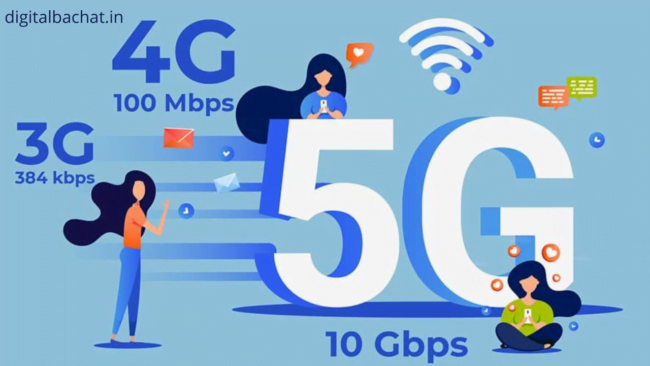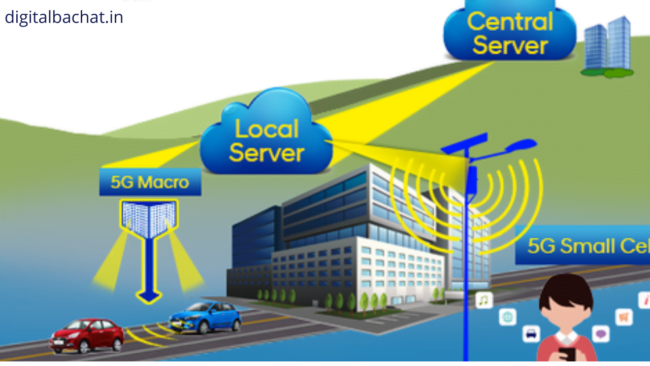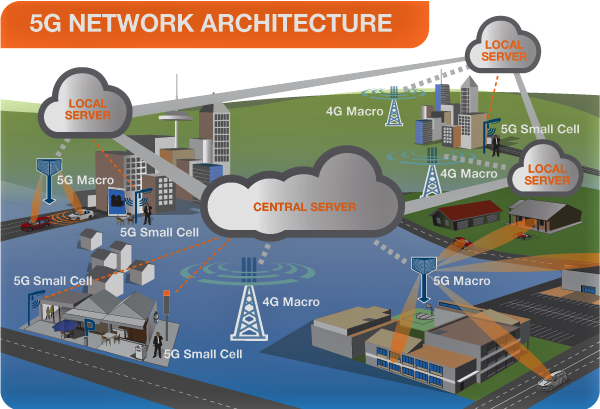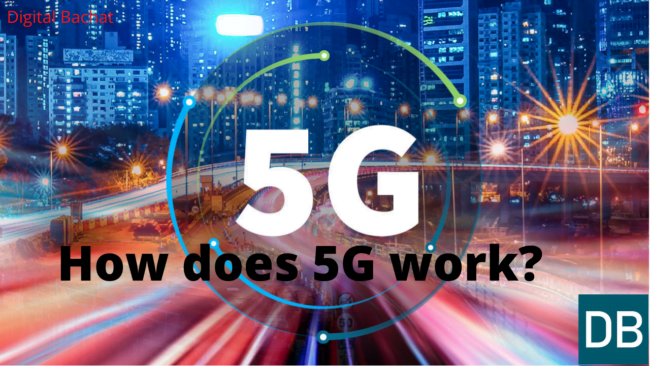The 5G network has become nowadays a hot topic to discuss in India. Whole telecom operators are in a fight to be the go-to source for 5G internet in the country.
Since it’s a new technology in India, just like in the initial days of 4G networks, people are wondering and finding it difficult to understand and adapt to the 5G network.
If you’re curious about the new 5G technology in India, stick to this article as we’ve deep dive into what is 5G network? How does it work? And especially, we also have covered the network architecture diagram of 5G internet.
What is 5G?
5G stands for fifth-generation technology standard for cellular networks. 5G is the replacement for 4G technology, which is what most modern mobile phones are connected to, and it was first widely deployed by cellular phone companies in 2019 and in 2022 in India.
The 5G network is designed to meet the data and connectivity of today’s modern society, and the growth of the Internet with billions of connected devices.

5G works closely with the now-existing 4G network before initially being developed for a fully standalone network in release and coverage expansion. Apart from getting faster connections and more capacity from this network, 5G has a very important advantage, in that it will do any work faster, without delaying time.
Using wireless networks allows latency time for devices to respond to each other. Speaking of 3G networks, it had a typical response time of 100 milliseconds. And 4G would have around 30 milliseconds and 5G would have 1 millisecond.
How does 5G work?
At the moment many companies are providing their 5G ultra-wideband network logo with many components, including fiber-optic cable, small cell, and broad radio wave spectrum, etc. All the company’s spectrum holdings are called the critical component millimeter wave spectrum, which also refers to the high-frequency band – specifically, it refers to those in the range of 28 to 38 GHz.

It is in these spectrum bands that will rely on tomorrow’s most latency-sensitive, adventurous, and bandwidth-intensive innovations. Think of the millimeter-wave spectrum, it is the fastest, fastest highway on the planet, with many millions of trucks traveling, and it is moving at a very high speed – separated from each other.
Well, the thing is also that its latency piece cannot be understood. Current 4G networks display latency of 30–150 milliseconds. And after 5G arrives, customers are expected to come down to 10 milliseconds. The 5G buildout has two important components, the small cell, and the fiber-optic cable.
Small cell transmitters are roughly the size of a laptop computer, which is strategically placed in the place where usage is most in-demand – shopping centers, such as downtown areas, sports venues, and college campuses. The fiber-optic cable consists of several dozens to hundreds of optical fibers within a monolith.

Which keeps the speed of light transferring data signals from small cells to the core network. Huge amounts of data can easily travel hundreds of miles at fast gigabit speeds with super-fast single-digit millisecond latency, and many company carriers have long been able to sustain such fiber technology.
In the future, it will be defined by the speed of data. An estimated 20.4 billion devices – whether cloud gaming systems, VR goggles, IoT sensors, or self-driving vehicles are highly expected to be online by 2025 and all such things will demand massive data on the network. The 5G network will not only make these data-intensive applications viable, but it also has the ability to change the data size of our world.
5G network architecture diagram?
As shown in the image below, the 5G network system model is a fully IP-based model, designed for wireless and mobile networks.

The system incorporates user terminals and several independent and autonomous radio access technologies. Radio technologies have each been considered an IP link to the external Internet world.
IP technology is specifically designed to ensure sufficient control data for the appropriate routing of IP packets, namely sessions between client applications and servers over the Internet, related to the fixed application connection. In addition, the accessible routing of packets should be corrected according to the policies given by the user.


